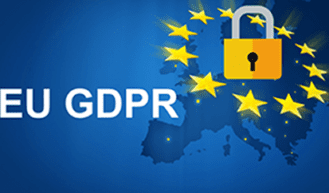Overcoming no decision
Marketing
QBS group
Sales
Who’s your worst competitor?
You would think that your deadliest enemy when it comes to closing a customer deal would be your fierce competitors out there doing their utmost to persuade your customers to come to them – but that’s in fact not the case. The biggest obstacle to deal-closing is: no decision.
Today the customer journey is conducted by the customer himself – to a far larger extent than before – with customers doing research and comparisons online like never before. But what is it then that prevents a prospective customer from making a purchase even after they have conducted a lengthy evaluation process? The reasons may surprise you.
In a lot of marketing and sales peoples’ perspective – this self-paced customer journey represents to a big extent a sales hurdle, as we would always like to come in early and influence and make sure that customer realizes that the issues they are trying to solve can be fixed by our solution! But – what we don’t very often realize is the level of stress and anxiety that the extensive online search and reading through tons of documentation can cause our potential customers. It doesn’t necessarily bring them clarity and ease of mind: quite opposite it can create even further levels of stress with “oh my – I didn’t think of that!” or “phew – sounds like a heap of work if we are to do this right!” could be some of the reactions to any customer exploring the CRM or ERP market. As a salesperson you need to realize this level of stress your customer might be experiencing – and address it up front.
So when addressing a customer in a live conversation for the very first time – best possible behavior is probably not to offer even another fat layer of documentation and confusion – as this might very easily result in the customer being pushed into a state of analysis-paralysis.
Customer is already too overwhelmed with information and contradictory evidence as it is – and if you add to that – you risk customer revolts to making the easy way out: no decision. It’s the salesperson’s responsibility to make it as easy and digestible for a customer to realize that, yes, there might be a mountain in front of me, but there are easy reachable “boot camps” along the way that mountainside – and my partner can be my mountain guide.
Below you can see some of the stress factors your customer may experience in their decision process – and the better you can detect what is the situation with your customer, the better you can help them overcome.
“At QBS group we’ve created a series of “Micro learnings” as part of our QBS Academy – short videos that gives you great concrete tips on how to move along the dialogue with clients, to avoid that biggest competitor of all times coming into play: No Decision.”

Budgetary Stress
The question here: Is the money available and justified to be spent? Whether a purchase is actually made is directly related to the perceived risk versus the anticipated reward. A company’s budgeting process is not only designed to prioritize where money is to be spent but also to remove the fear of spending it. We all love a customer that goes “yup – budget is there” and normal procedure is to say a lead is not warm enough if the “B” in BANT is not fulfilled. When in fact the budget might be rather small – or still subject to be proved worth the while – and that’s your job to help the customer make that internal case. Every initiative and its associated expenditure is competing against all the other projects that are requesting funds. Purchases are continually reprioritized based upon emergencies and in response to changing conditions. So help your customers put this project into correct order in the priorities.
Corporate-Citizenship Stress
Before finalizing an order, executives will always ask: Is this purchase really necessary?
While customers inherently want to do what’s in the best interest of their company and to be good corporate citizens, the fundamental dynamic of corporate-employee loyalty has changed. Today, business is a “survival of the fittest” world where employment is never guaranteed and loyalty frequently goes unrewarded. In some situations, prospective buyers can feel continual pressure to put their individual needs before the company’s. For example, I remember one information technology decision-maker telling me, “There’s no such thing as picking the wrong solution so long as it helps you land your next job.”
Even after a formal evaluation process, the likelihood that a purchase will not be made jumps tenfold when the solution recommended is not aligned to company’s goals and direction. This is frequently the case with projects and purchases that are instigated by lower levels of an organization as they bubble up the chain of command for review. There is not a compelling business case to drive the purchase forward so it never garners senior level support.
Organizational Stress
Buyers care about how colleagues perceive him. Peer pressure is a powerful influencer of group dynamics and evaluators are constantly worried about how the purchase decision will reflect on them. Senior executives are worried about what investors, the board of directors, and members of the leadership team think about them. And of course, they want their employees to respect them as well. Mid-level managers suffer competitive pressure because all are striving to advance in their careers and move upward in the organization. Lower level personnel are continually seeking to prove themselves to their managers.
Whether from above, below, or the same level in an organization, coworkers are continually evaluating the behavior, success, and failures of those tasked with the decision-making process. Obviously, this exerts pressure on the evaluators to make the right decision and not to make a decision if there isn’t an obvious choice or clear-cut direction.
Vendor Selection Stress
One of the biggest problems during the sales cycle is that the difference between most products is extremely small. Compounding this problem is that everyone is presenting the same basic messages to the customer. Take a moment and visit the home page of your company’s website and those of your two biggest competitors. Often you’ll see that the words and claims are basically interchangeable.
There tends to be a higher no-decision rate where product differentiation is extremely small. Since all the competing products share the same basic features, functions, and benefits, evaluation team members may take longer to make their decision or postpone it indefinitely.
Informational Stress
As you make your pitch, buyers are inevitably asking themselves: Is the information being presented truthful?
We live in very skeptical times in which information presented by the media and experts is continually challenged (fake news!) and constantly debunked. In addition to being subject to the general cynicism of our society, most customers have had negative experiences with some salespeople sometime in the past. Therefore, customers are always in the stressful position of separating fact from fiction. Meanwhile, even the most ethical salesperson carries the burden of proving he’s telling the truth.
Worse yet, as the sales cycle progresses competing vendors may try to escalate FUD (fear, uncertainty, and doubt) in the customer’s mind about the wherewithal of the competitors’ and the capabilities of their products. For example, competitors will try to sabotage one another with facts such as unfavorable performance metrics, missing functionality, and tales of unhappy customers. In turn, the attacked competitors will provide the customer with believable information that contradicts the original attacks. Therefore, the sales cycle naturally disintegrates into a quarrel between salespeople and this scenario helps set the stage for no decision to be made.
Evaluation Committee Stress
Whenever a company makes a purchase decision that involves groups of people, self-interests, politics, and group dynamics will influence the final decision. Tension, drama, and conflict are normal parts of group dynamics because decisions are not typically made unanimously. As members promote their own personal favorites, the interpersonal conflicts can cause the decision-making process to stagnate and stop. Other selection team members may not be 100 percent certain they are picking the right solution. All of this uncertainty encourages no decision.
Salespeople need to keep in mind a basic fact: Customers are stressed out. They don’t know whom or what to believe. They are under immense peer pressure, and they are torn between doing the right thing for the greater good of the company and acting in their best personal interest. To make matters worse, the vendors increase the pressure by injecting claims of their superiority and accusations about their competitors’ inferiority. For all these reasons it’s no surprise that no decision is the top competitor today.
Competing Goals
Generally, buying processes are filled with drama as different factions compete for access to limited funds. All of them have pressing needs, and there is never enough time, money or people to throw at every problem. Internal politics plays a big role, and teams with more political clout often win.
In extreme situations you can even see teams on different continents want to solve similar problems using different vendor solutions. They end up competing with each other to sell their preferred vendor internally. Meanwhile, if it tends to prefer internal build, their internal IT department becomes a third competitor. Management expects them to come to agreement on a solution. If they can’t reach consensus, nothing happens. Silly situation, right?
Organizational Inertia
Sometimes, organizations just can’t overcome their own inertia to move forward. They may not feel the pain intensely enough, they may be overwhelmed with current business demands, they may believe that the pain of change is worse than the pain they’re experiencing now, or they might just give up on trying to build enough consensus to gain approval. Sometimes, a key advocate gets so fed up that they leave the company. Regardless of the reason, the sales process gets very expensive as the vendor tries to overcome the inertia.
Marketing can help by collaborating closely with Sales and creating content that is specifically relevant to the pain of that particular client’s status quo. Then re-position the messaging in that content for each member of the buying committee and run an email campaign targeting that specific account. Account-based marketing strategies can be particularly effective in these situations.





























































































